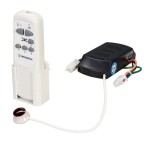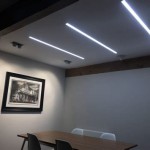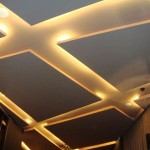Recessed Lights with Ceiling Fan: A Comprehensive Guide
Integrating recessed lights into a ceiling fan is a stylish and practical solution that enhances both illumination and air circulation in indoor spaces. Here's a comprehensive guide covering the essential aspects of installing and utilizing recessed lights with ceiling fans.
Benefits of Recessed Lights with Ceiling Fans
Combining recessed lights and ceiling fans offers several advantages:
- Improved Lighting: Recessed lights provide focused, directional lighting that can illuminate specific areas or tasks.
- Air Circulation: Ceiling fans distribute air evenly throughout the room, improving comfort and energy efficiency.
- Space Optimization: Recessed lights mount flush with the ceiling, reducing visual clutter and maximizing headroom.
- Aesthetic Appeal: The combination of recessed lights and a ceiling fan creates a cohesive and modern design element.
Factors to Consider
Before installing recessed lights with a ceiling fan, consider the following factors:
- Ceiling Height: Recessed lights require a minimum ceiling depth, so ensure your ceiling is high enough to accommodate them.
- Ceiling Joists: Locate the ceiling joists to determine where you can safely install recessed lights without compromising structural integrity.
- Fan Location: Position the recessed lights strategically to avoid interference with the fan blades or light fixtures. li>Lighting Needs: Determine the desired lighting intensity and spread to select the appropriate type of recessed lights.
Installation Process
The installation process involves the following steps:
- Mark Locations: Determine the desired locations of the recessed lights and mark them on the ceiling.
- Cut Holes: Use a hole saw to cut the appropriate-sized holes for the recessed lights.
- Run Wires: Extend the electrical wires from the ceiling fan junction box to each recessed light location.
- Install Housings: Insert the recessed light housings into the holes and secure them with screws.
- Connect Wires: Connect the recessed light wires to the fan's electrical system.
- Finish Installation: Insert the recessed light trims and adjust them as needed to ensure a flush fit.
Maintenance and Troubleshooting
To maintain recessed lights with ceiling fans:
- Clean Fixtures: Regularly clean the recessed light trims and fan blades to prevent dust and dirt accumulation.
- Replace Bulbs: Replace burnt-out recessed light bulbs promptly to maintain optimal lighting.
- Check Electrical Connections: Periodically check electrical connections to ensure they are secure and not loose.
In case of troubleshooting, check for the following issues:
- Recessed Lights Not Turning On: Verify the electrical connections, check the circuit breaker, or replace the light bulbs.
- Flickering Lights: Tighten the recessed light bulbs or replace them if necessary.
- Ceiling Fan Vibrations: Ensure the ceiling fan is properly balanced and installed securely.
Conclusion
Recessed lights with ceiling fans offer a versatile and stylish solution that combines efficient lighting with optimal air circulation. By understanding the essential aspects covered in this guide, you can successfully install and maintain this combination in your indoor spaces, enhancing both functionality and aesthetics.

Led Recessed Lighting Right Way

Recessed Lighting Gold Standard Electric

Avoid Strobing Try These Recessed Lights Layouts With Ceiling Fan

Lots Of Windows Ceiling Fan And Recessed Lights Are Great Additions Traditional Conservatory Dc Metro By Post Designers Builders Division Sundecks Inc Houzz Ie

Recessed Lighting Solutions For Living Rooms Entryways And Dining Ideas Advice Lamps Plus

Ceiling Fan Installation San Diego Right Way Lighting

Ready To Upgrade Your Lighting 8 Benefits Of Led Recessed Harrison Electric

Recessed Lighting Ambler Pa It S On Electrical

Recessed Lighting With Ceiling Fan Implementation Tips

Open Loft
Related Posts








